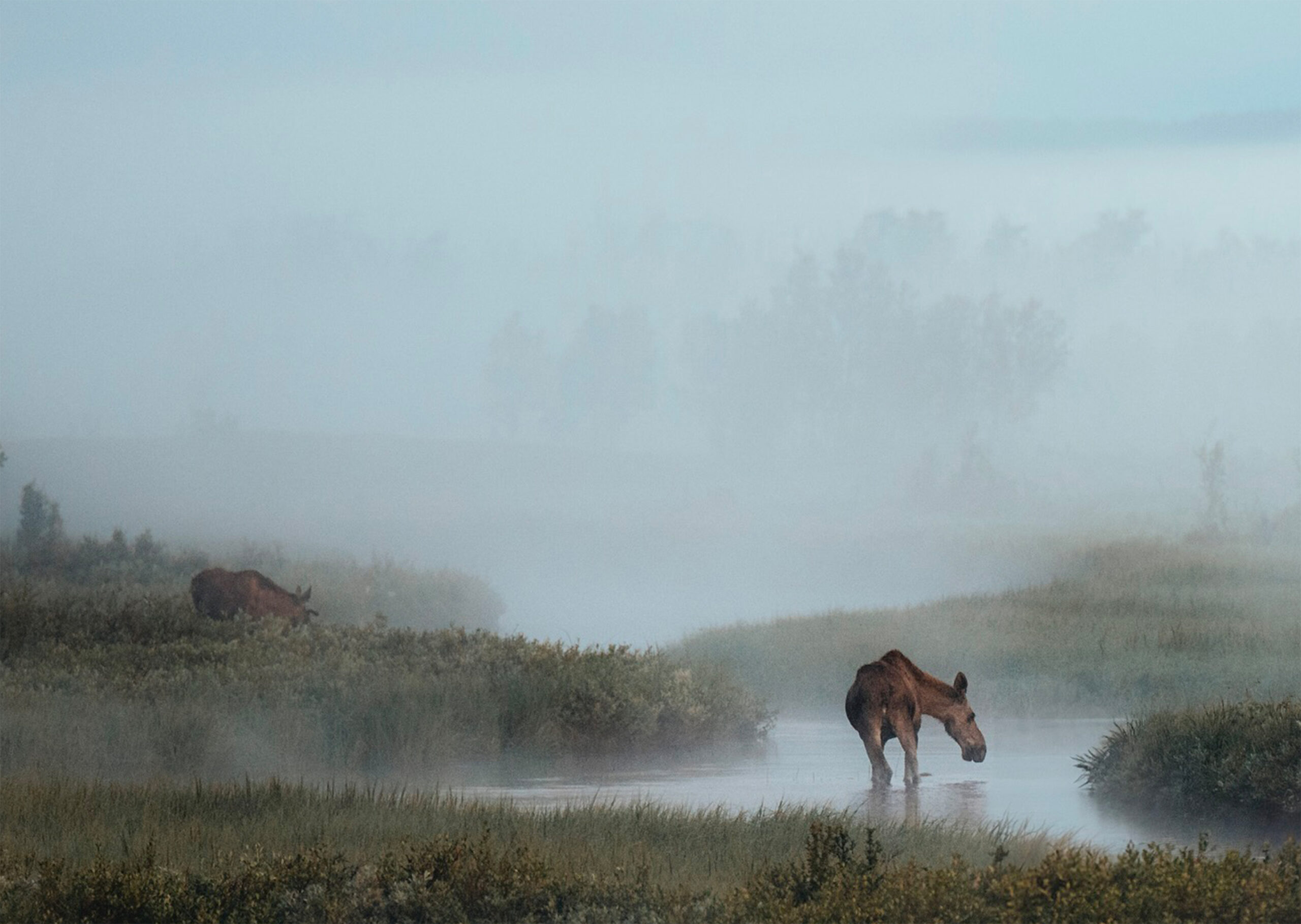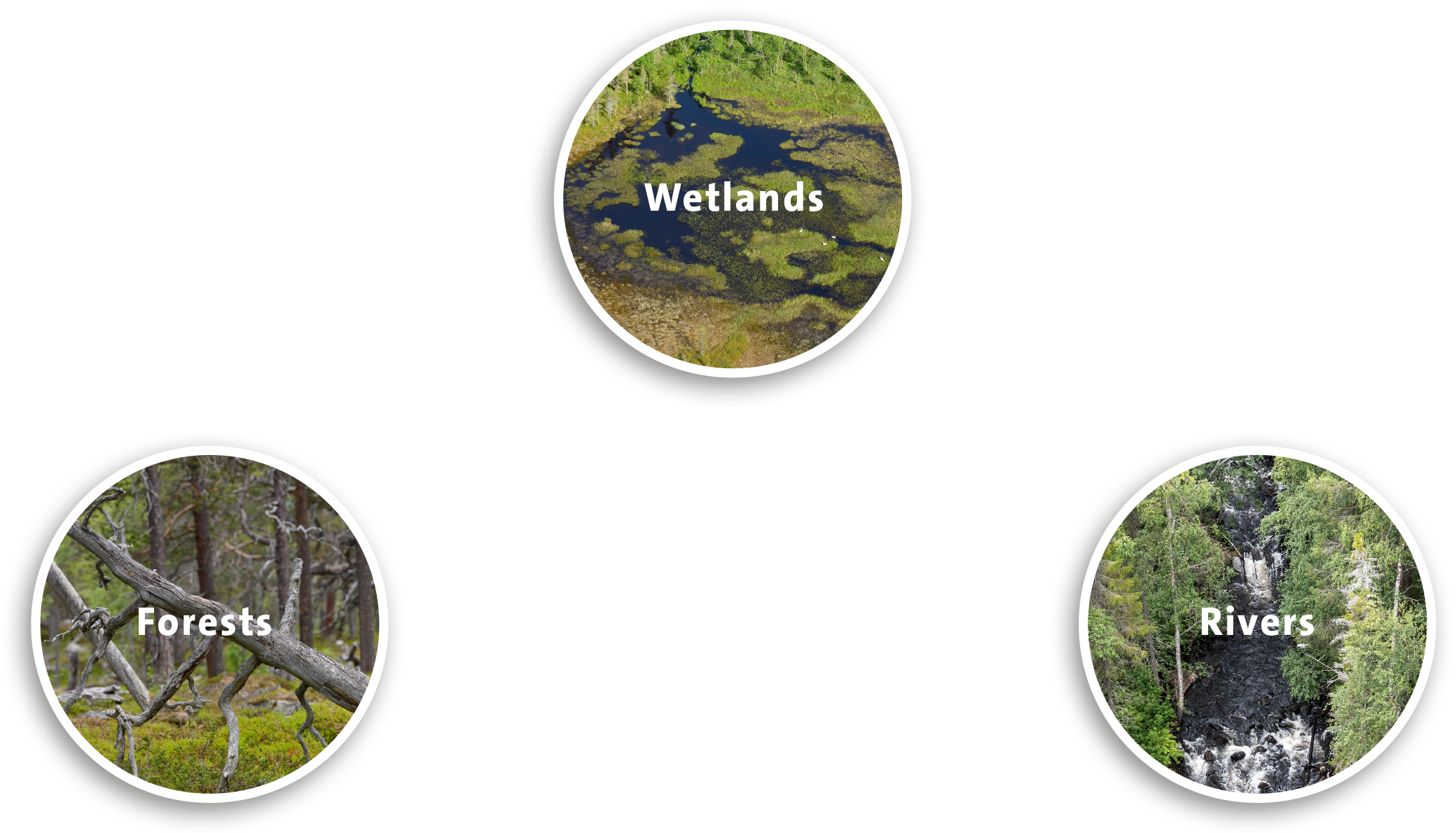“Without natural groundwater levels and soil moisture, a region’s natural species – from vegetation to animals – cannot thrive, and ecosystem function declines. Therefore, rewilding must include restoring water’s natural flow through the landscape.”
Wilder waterscapes
Water, the source of life, trickles naturally through streams, rivers, wetlands, and soils as part of its cycle. The path it takes, how quickly it moves, and the saturation it leaves behind is collectively known as hydrology. Hydrological processes shape ecosystems, habitats, and the species within them.
Rewilding Sweden highlights the vital role of hydrology in biodiversity by reimagining landscapes as “waterscapes,” blurring the lines between terrestrial and aquatic ecosystems. This approach underscores transboundary ecological connections often overlooked in traditional restoration, and it’s flexible: it recognizes not only how water regimes shape ecology from the ground up, but also how they are influenced from the top down in dynamic loops – for example, how herbivores alter vegetation, affecting water patterns and local uptake. In other words, a waterscape approach embraces not only water itself, but the entire ecology shaped by it – or shaping it in return.
Forests – Wetlands – Rivers
Thriving worlds within …
This refers to the rich diversity of life in a waterscape – plants, animals, and fungi – that shape their environment through interactions with it and each other. Biodiversity’s value lies not in the number of species, but in their function – how they create conditions for others, cycle nutrients, or store carbon. Some species, known as “keystone species” or “ecosystem engineers,” are especially important. Beavers are a prime example.
… wilder lands between
This approach underscores transboundary ecological connections often overlooked in traditional restoration, and it’s flexible: it recognizes not only how water regimes shape ecology from the ground up, but also how they are influenced from the top down in dynamic loops – for example, how herbivores alter vegetation, affecting water patterns and local uptake. In other words, a waterscape approach embraces not only water itself, but the entire ecology shaped by it – or shaping it in return.


Enhancing blue-green connectivity for wildlife
Rewilding Sweden’s efforts in the Nordic Taiga largely focus on creating habitats and facilitating migration and dispersal routes for keystone biota, or for those being signal species for environments that support broader biodiversity.
A key part of our work is therefore to reconnect fragmented habitats. One way we achieve this is by enhancing what we call ’blue-green connectivity’ for wildlife. When practising a waterscape approach, blue-green (i.e., water–land) connectivity is strengthened – for example, longitudinally by facilitating dispersal of seeds and plant propagules through interconnected river systems, or movement along riparian habitats for iconic taiga species such as Eurasian elk and reindeer. Considering land-water interactions in rewilding also strengthen lateral (sideways) connectivity. For instance, return of deciduous trees are supported by increased natural inundation which in turn favours fish by boosted land-based energy supply for stream insects – the prime food source for trout and salmon.
A holistic approach
In line with its guiding principles as a holistic approach to nature recovery, rewilding works to restore lost interactions and restore habitat connectivity. At Rewilding Sweden, we believe that our waterscape approach helps us to identify and address factors that are having a negative impact on landscapes and their wildlife in an interconnected way. This is important since problems that manifest themselves in one place often originate elsewhere. As such, efforts to restore a forest can help to restore conditions in a stream, while the restoration of a wetland can help to rewild a neighbouring forest.
